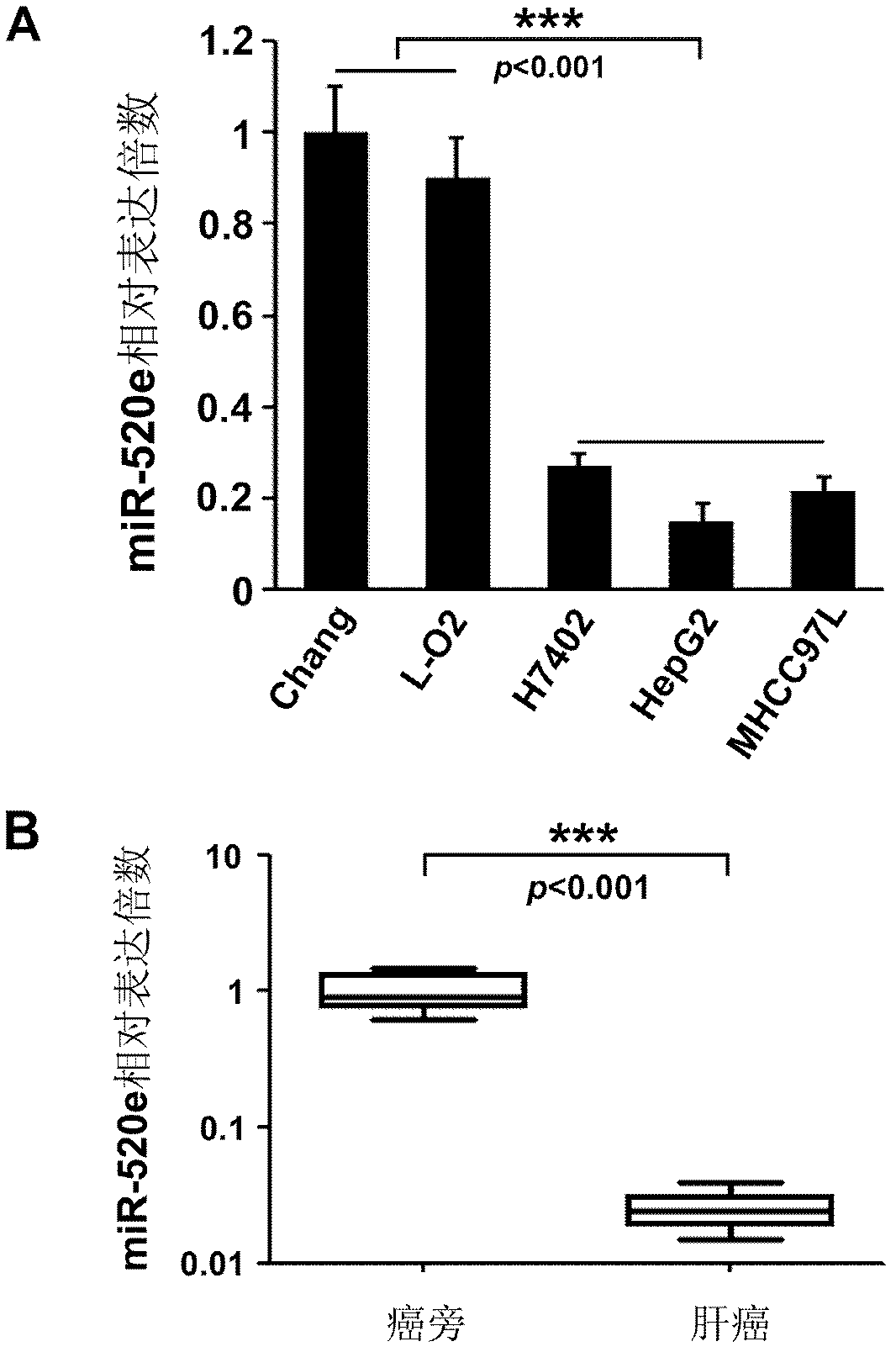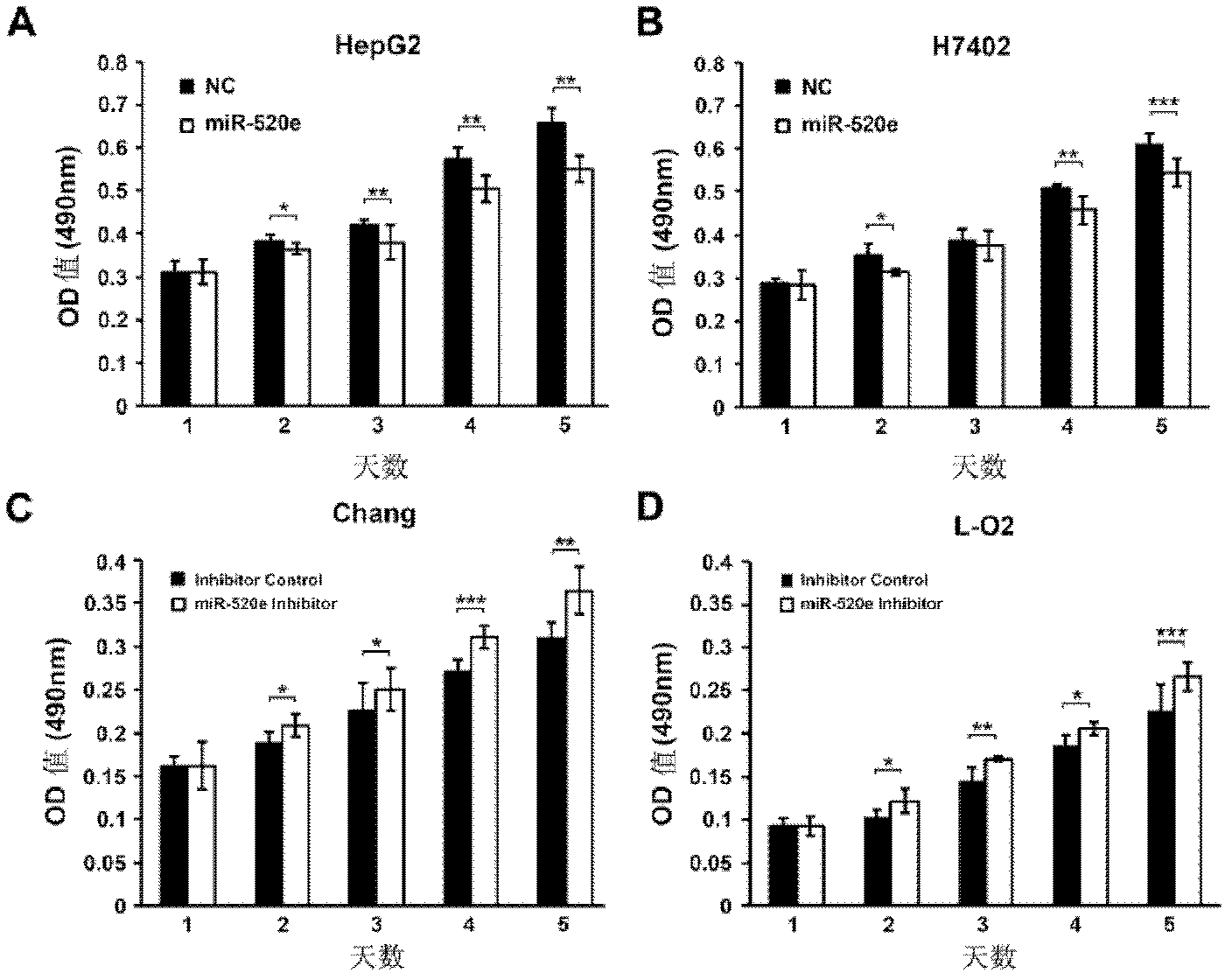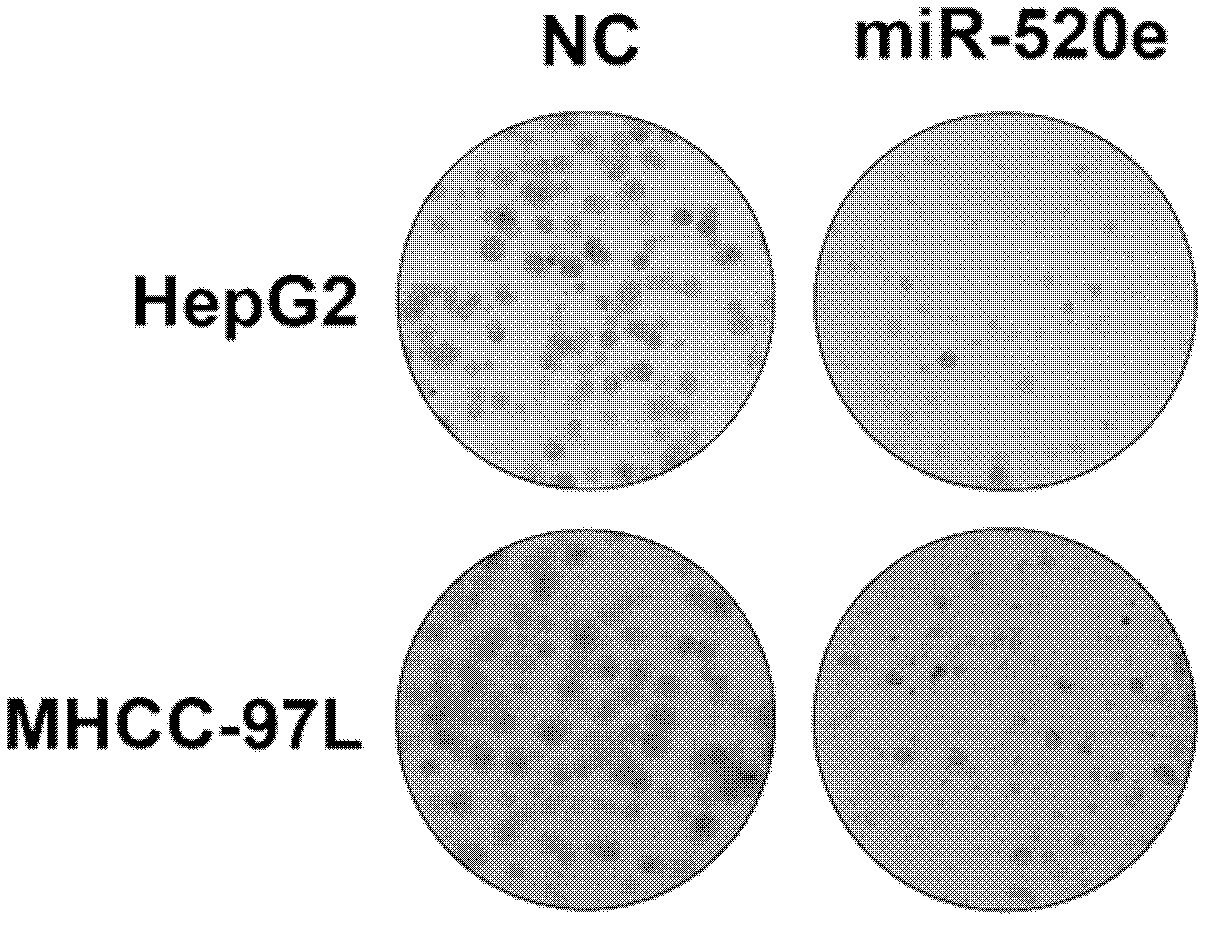Antitumor application of has-miR-520e
A technology of has-mir-520e and uses, which is applied in the field of treating primary hepatocellular carcinoma to achieve the effect of reducing proliferation
- Summary
- Abstract
- Description
- Claims
- Application Information
AI Technical Summary
Problems solved by technology
Method used
Image
Examples
Embodiment 1
[0019] Example 1: Real-time quantitative PCR analysis of has-miR-520e expression:
[0020] 1. Cell line:
[0021]
[0022] Sample preparation: Surgical resection specimens from 11 cases of primary hepatocellular carcinoma (HCC) were collected, frozen at -80°C, and transported in liquid nitrogen. According to clinicopathological analysis, all belonged to stage II and III, and the specimens were provided by Tianjin First Central Hospital.
[0023]
[0024] HBsAg: positive (+) or negative (-);
[0025] 2. Extraction of total RNA: Trizol reagent was used to extract the total RNA of cells and tissues, and Trizol reagent was purchased from Invitrogen
[0026] 1) Add 1ml Trizol to the cell culture bottle, let it react at room temperature for 15min, repeatedly suck and mix with the tip of the pipette, transfer to RNase-free 1.5ml Ep tube; or take 0.1-0.2g of fresh animal tissue and put it in a tissue homogenizer Add pre-cooled 1ml Trizol to a glass homogenizer, and homogenize...
Embodiment 2
[0062] Example 2: The effect of has-miR-520e on the proliferation of liver cancer cells
[0063] The cell proliferation ability was detected by MTT method, two HCC cell lines (HepG2, H7402) and two normal liver cell lines (Chang liver, L-O2) were selected, and the liver cancer cells were transfected with miR-520e mimics (miR-520 mimics) And normal hepatocytes transfected with miR-520e inhibitor (miR-520e inhibitor) as the experimental group, random sequence (Negative Control, NC and Inhibitor Negative Control, Inhibitor Control) as the control group. miRNA was designed and synthesized by Guangzhou Ruibo Biotechnology Company.
[0064] 1) Cell inoculation: the above-mentioned cells in the logarithmic growth phase were made into a single cell suspension with RPMI1640 or DMEM culture medium containing 10% fetal bovine serum, and seeded into a 96-well cell culture plate with 4000-5000 cells per well. The volume of each well is 100ul.
[0065] 2) Cell culture and transfection: Af...
Embodiment 3
[0072] Example 3: The influence of has-miR-520e on the malignant proliferation of liver cancer cells detected by plate colony formation
[0073] 1) Inoculation of cells: after transfection, liver cancer cells were inoculated in a flat-bottomed 6-well culture plate, 1000 cells / well, the culture plate was shaken to make the cells evenly distributed, and cultured in a 37°C, 5% CO2 incubator.
[0074] 2) Cell culture: Stop the culture when visible clones appear in the culture plate, discard the culture medium, and wash twice with PBS.
[0075] 3) Cell fixation: fix with 2ml of pure methanol for 15min.
[0076] 4) Cell staining: discard the fixative, add an appropriate amount of methylene blue staining solution for staining for 10-30 minutes, slowly wash away the staining solution with running water, and dry at room temperature.
[0077] 5) Observation: Microscopic observation, counting the number of clones greater than 50 cells.
[0078] 6) Calculation of clone formation rate: n...
PUM
 Login to View More
Login to View More Abstract
Description
Claims
Application Information
 Login to View More
Login to View More - R&D Engineer
- R&D Manager
- IP Professional
- Industry Leading Data Capabilities
- Powerful AI technology
- Patent DNA Extraction
Browse by: Latest US Patents, China's latest patents, Technical Efficacy Thesaurus, Application Domain, Technology Topic, Popular Technical Reports.
© 2024 PatSnap. All rights reserved.Legal|Privacy policy|Modern Slavery Act Transparency Statement|Sitemap|About US| Contact US: help@patsnap.com










